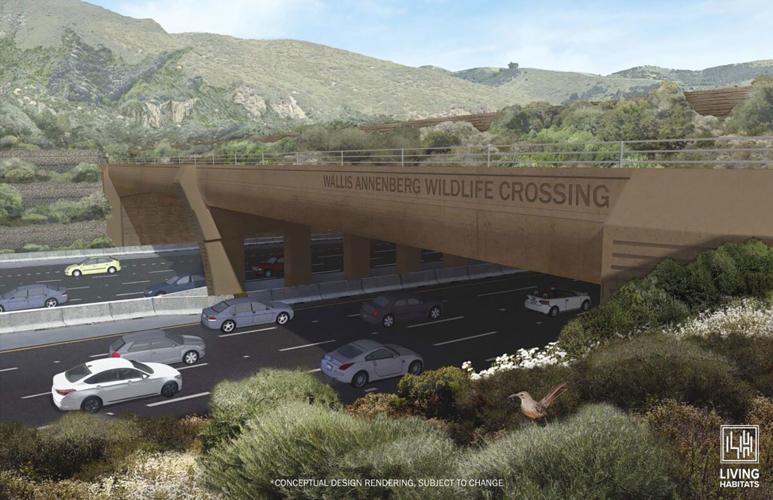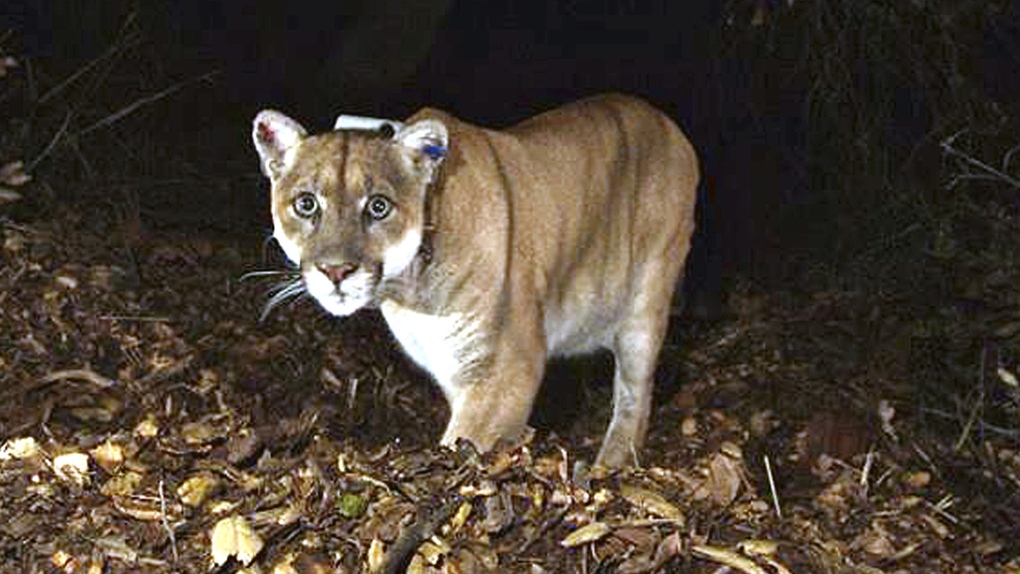CNN — It sounds like the plot of a Disney movie: a mountain lion prevented from finding a mate because he’s trapped by L.A. freeways becomes famous and inspires the construction of the world’s largest wildlife overpass.
But it really happened.
“He was surviving in a space much, much smaller than any male mountain lion ever had — eight square miles,” explained Beth Pratt, the California Director of the National Wildlife Federation. “The average male mountain lion territory is 150 miles.”
The cougar, named P-22, became a celebrity among Hollywood stars who would sometimes spot him as he roamed the neighborhoods near Los Angeles’ Griffith Park.
“A mountain lion lived in L.A. and people didn’t fear him,” said Pratt. “They saw him as a neighbor; they’d be eating dinner and he’d walk by their dining room at night and they’d share a photo and be like: ‘Hey, P-22 visited me.’ “
Because of P-22’s popularity, people wanted to help the mountain lion – and others like him – roam the areas beyond Los Angeles’ bustling six-lane 101 Freeway. The idea of a wildlife overpass was garnering interest, but funding it was another issue.
So Pratt, who is most comfortable outdoors in casual clothes and hiking boots, found herself in swanky Bel Air mansions, pleading for endowments.
Donations poured in from celebrities including Leonardo DiCaprio, Rainn Wilson, Barbra Streisand and David Crosby, and support also came from Watts residents in South Los Angeles.
Residents of Watts see P-22 as “a social justice hero,” Pratt explained.
“He’s someone who was also impacted by the injustice of putting freeways through communities,” she said. “Whether you’re [living in] Beverly Hills, whether you’re [living in] Watts, we all come together over wildlife.”

Finding the right spot
Some 300,000 to 400,000 cars a day will pass underneath the Wallis Annenberg Wildlife Overpass when it opens in two years.
The crossing includes specially designed sound walls, along with natural sound barriers of tall trees and lush plantings. Everything is designed to filter out the noise of the freeway, since most animals get frightened and turn around if it’s too noisy.
Engineers are also taking into account animals’ fear of bright lights.
“All the lights of those headlights are a deterrent to wildlife,” Pratt explained. “We’re actually designing light barriers — not just on the crossing but in the approach — so they won’t get scared and turn around, which is what happens.”
The wildlife crossing is a public-private project, spearheaded by the National Wildlife Federation along with California’s transportation department. About half of the $100 million cost was funded by private donations, including $26 million from philanthropist Wallis Annenberg, whose contribution was instrumental in propelling the project forward.
For 20 years, the National Park Service researched the exact spot where the freeway overpass should go.
Rewilding an L.A. freeway
Besides its massive scope, the Wallis Annenberg Wildlife Crossing is different from other wildlife overpass systems across the world in that it will host a whole ecosystem on top of it.
A nearby plant nursery is growing native, fire-resistant plants that will eventually cover the crossing.
“We’ve been collecting seeds for years now to match the surrounding ecosystem, and that’s important with climate — both wildlife and plants need options,” according to Pratt.
Invasive, fire-fueling plants — including the ubiquitous black mustard plant — will be removed from the area. The nearby utility poles had to be moved to accommodate the crossing, so those will now be placed underground, which will also help with fire resistance.
“Not only are you going to have wildlife like mountain lions and bobcats crossing it, you’re going to have monarch butterflies laying their eggs on milkweed on top of it, you’re going to have western fence lizards living on top of it,” Pratt said.
“Part of this project is we are going to be restoring the landscape, not just on the crossing, but around it, back to what it should be. So that’s going to help with a lot of things, as well as fire risk.”
P-22 won’t be around to use the wildlife crossing that he helped inspire. In December 2022, just a few months after the National Wildlife Federation and California’s transportation department broke ground on the bridge, the cougar died.
Although his death was heartbreaking, Pratt said he actually lived a long life for a mountain lion.
“But more than that, he used his celebrity for good. I call him the ‘ultimate cougar celebrity influencer.’”
His story, she said, ensured a future for other mountain lions in the region.
“And we owe him a debt of gratitude. He has inspired the building of the Wallis Annenberg Wildlife Crossing. We would not have it without him.”

